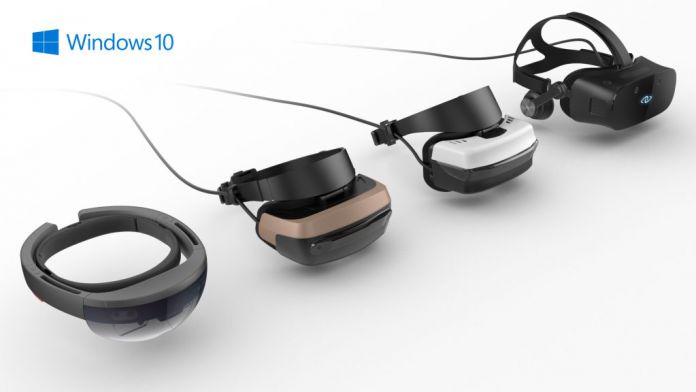Speaking to VentureBeat, Kipman was eager to address how Windows Mixed Reality fits into the wider Windows 10 ecosystem. Considering Microsoft’s Universal Windows Platform concept, Kipman stresses mixed reality fits into the Universal idea. “There is one operating system. It’s Windows 10 and we love it. What I do want to differentiate is how that one operating system evolves into the future. As a matter of fact, in all your machines, on October 17, you’re going to download this version of the OS. You’ll have the same beautiful desktop, and when you plug in the headset there will be nothing to install.” Microsoft describes Windows Mixed Reality as the first true platform of its kind. The company believes it can surpass virtual reality. However, developer support is hugely important and content will need to be available from the launch next week.
Kipman says apps and content will be available from the store. With that in mind, new titles will be added consistently. To start, there will be 20,000 apps, while Microsoft’s legacy 2D apps also work in the augmented space. Kipman says Altspace is the standout service at launch. “For me the killer app for mixed reality is Altspace communication, the communication fabric of being able to be with all the people you love in a family setting. Or as an employer, to be able to have my people be around the world in a physically present way without actually having to be physically present. The ability this provides—I mean, why are you here today? Think about that. You all have, I hope, put a premium on face-to-face interaction, reading each other’s facial expressions. There’s more to this experience than doing it over Skype, text messages, email.” Kipman says Microsoft also made sure the platform was diverse from the start. While bespoke business applications will further enterprise adoption, the company has also focused on delivering a consumer experience. Alex Kipman points out this makes sense in the wider scheme of user behaviour. “I think humans will be humans. Are you a consumer or are you working right now? We do all of these things. One of the beautiful things to embrace in the future is the fact that these devices will need to do all of these things. It’s not a question of how much time you spend on your laptop working versus watching a movie or playing a game. The answer is yes. It’ll vary by the day, by the person, by the time. You’ll see the same even in the early days of mixed reality. Using something like HoloLens as an example, we have more early traction in modern workplaces, where it’s transforming people’s lives. I think you correctly call those applications more bespoke applications. You’re going to see ISBs building more evergreen applications, or out of box value, as the world moves forward. In the world of entertainment, gaming, things like that, there’s more content there today and we’re seeing that show up as well.”
Customer Choice, Not Fragmented Hardware
Last week, Samsung entered Microsoft’s Windows Mixed Reality with the most premium headset for the platform to date. Previously, other announced headsets from Lenovo, Dell, and other major Windows partners stuck to a uniform hardware design.
However, Samsung Odyssey introduced more premium features, such as OLED displays and built-in headphones. While this create a tiered hardware market, Kipman does not envisage problems: “The way to look at it—I wouldn’t call any of these beautiful, amazing, powerful, delicious headsets old. They’re all brand new on October 17. What you’re seeing, again, is choice for customers. Choice on price point, choice on spec. They’re all based on our reference design. The perspective is, all of these headsets—I don’t care if you plug them into an Ultra machine, if you plug them into a Windows Mixed Reality machine. It just works. To your point, fragmentation is bad. You’ll see headsets change over time. There’s opportunity for our partners. We have an amazingly creative ecosystem of partners and we’re working together with them to give value to their businesses and their customers. As we do that, we’re creating a single platform and working with our silicon partners – Intel, AMD, and Nvidia – to make sure we lower the total cost of ownership of these experiences and keep a seamless experience. The only difference for a customer walking into our line this year—if they want something with discrete graphics, that’s a Windows Mixed Reality Ultra spec. If they want something with integrated graphics, that’s a Windows Mixed Reality experience. Plug any of these headsets into either spec, it just works.”






